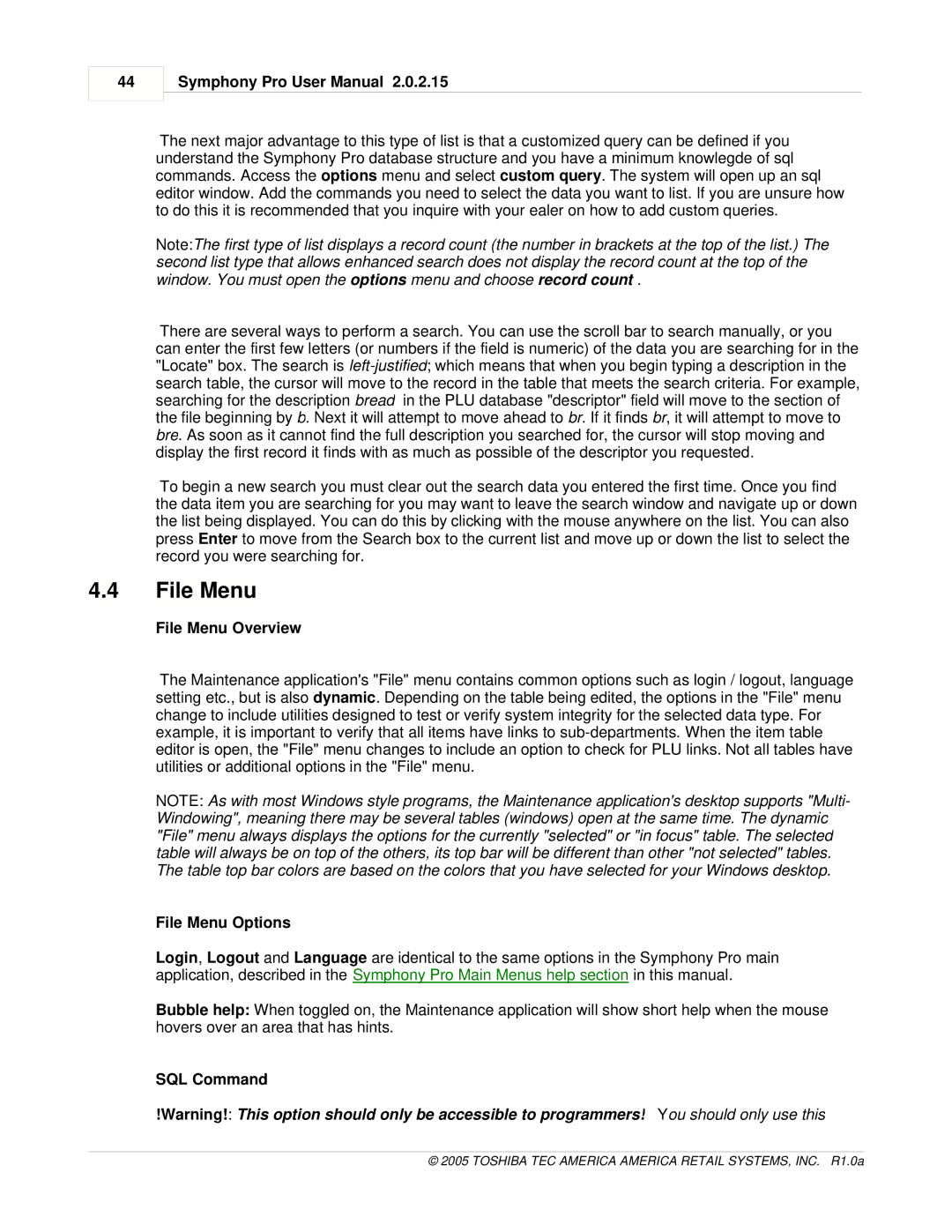
44
Symphony Pro User Manual 2.0.2.15
The next major advantage to this type of list is that a customized query can be defined if you understand the Symphony Pro database structure and you have a minimum knowlegde of sql commands. Access the options menu and select custom query. The system will open up an sql editor window. Add the commands you need to select the data you want to list. If you are unsure how to do this it is recommended that you inquire with your ealer on how to add custom queries.
Note:The first type of list displays a record count (the number in brackets at the top of the list.) The second list type that allows enhanced search does not display the record count at the top of the window. You must open the options menu and choose record count .
There are several ways to perform a search. You can use the scroll bar to search manually, or you can enter the first few letters (or numbers if the field is numeric) of the data you are searching for in the "Locate" box. The search is
To begin a new search you must clear out the search data you entered the first time. Once you find the data item you are searching for you may want to leave the search window and navigate up or down the list being displayed. You can do this by clicking with the mouse anywhere on the list. You can also press Enter to move from the Search box to the current list and move up or down the list to select the record you were searching for.
4.4File Menu
File Menu Overview
The Maintenance application's "File" menu contains common options such as login / logout, language setting etc., but is also dynamic. Depending on the table being edited, the options in the "File" menu change to include utilities designed to test or verify system integrity for the selected data type. For example, it is important to verify that all items have links to
NOTE: As with most Windows style programs, the Maintenance application's desktop supports "Multi- Windowing", meaning there may be several tables (windows) open at the same time. The dynamic "File" menu always displays the options for the currently "selected" or "in focus" table. The selected table will always be on top of the others, its top bar will be different than other "not selected" tables. The table top bar colors are based on the colors that you have selected for your Windows desktop.
File Menu Options
Login, Logout and Language are identical to the same options in the Symphony Pro main application, described in the Symphony Pro Main Menus help section in this manual.
Bubble help: When toggled on, the Maintenance application will show short help when the mouse hovers over an area that has hints.
SQL Command
!Warning!: This option should only be accessible to programmers! You should only use this
